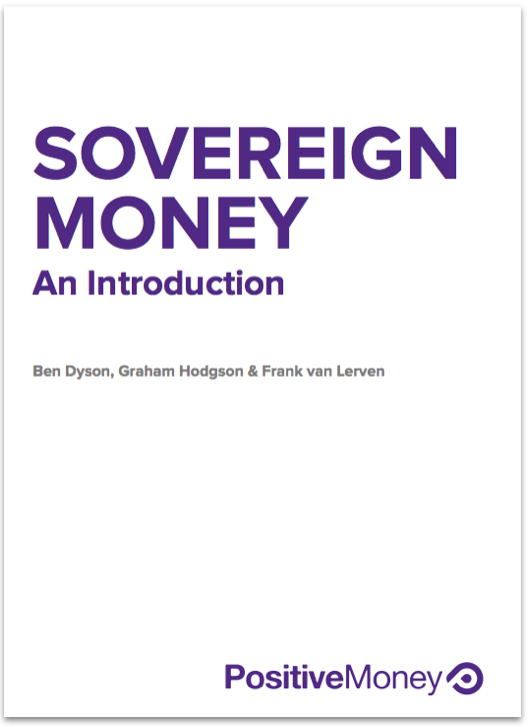Sovereign Money: An Introduction


We’ve published a new report:
Sovereign Money: An Introduction
This report presents a reform to the banking system that would remove the ability of banks to create money, in the form of bank deposits, when they make loans. It would transfer the ability to create new money exclusively to the state, creating what we have termed a ‘sovereign money’ system.
This paper replaces and significantly revises ‘Creating a Sovereign Money System’, which was published in 2013 and revised in 2014. It takes account of feedback, suggestions and constructive criticism from a wide range of economists and commentators, for which we are extremely grateful.
It also has a new section at the back, Responses to Common Critiques, which deals with:
Credit supply
Interest rates
Near monies
Shadow banking
Monetarism
The proposal has its origins in the writings of Frederick Soddy (1926). It was presented to US president Franklin D. Roosevelt by Frank Knight and Henry Simons in the aftermath of the Great Depression, and popularised by Irving Fisher’s book 100% Money. Variations of these ideas have since been proposed by Milton Friedman, James Tobin, John Kay and Laurence Kotlikoff.
More recently, economists at the International Monetary Fund modelled Irving Fisher’s original proposal and found both “strong support” for all of its claimed benefits and extra positive efects. Since then, the idea has been supported by the Financial Times’ chief economics commentator, Martin Wolf, and highlighted by former Bank of England Governor Mervyn King, former chairman of the UK’s Financial Services Authority, Adair Turner, and a Vice-President of the European Central Bank, Vitor Constâncio.
Similar proposals have been referred to as ‘100% money’ or ‘full reserve banking’. However, there are some subtle technical differences between those proposals and the one in this paper.
We therefore refer to this specific reform as a ‘sovereign money system’, describing a system in which money as a means of payment is created exclusively by the state, usually via the central bank.
The structure of the paper is as follows:
Executive Summary
Chapter 1: Understanding the Current Monetary System
Chapter 2: Consequences of the Current Monetary System, and Sovereign Money as a Solution
Chapter 3: Changes to Payments and Lending in a Sovereign Money System
Chapter 4: The Monetary Policy Framework in a Sovereign Money System
Chapter 5: Transition
Chapter 6: Responses to Common Critiques
Appendix: Balance sheets pre- and post-transition